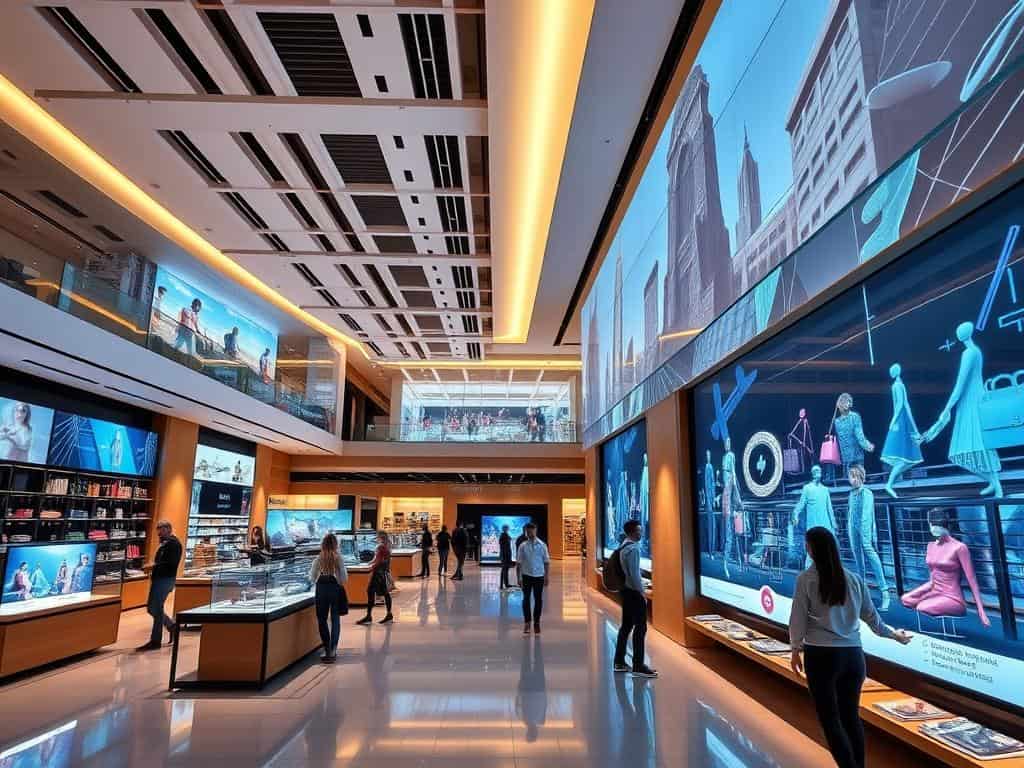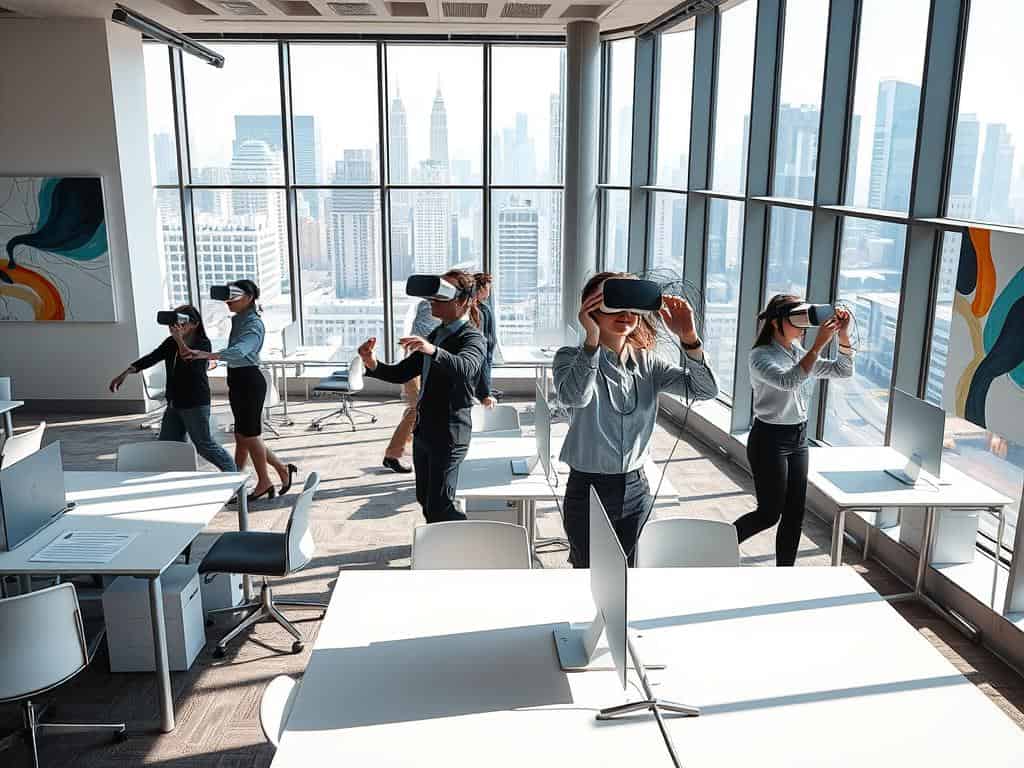Did you know the global Virtual Reality (VR) market is set to hit $57.55 billion by 2027? This growth shows VR is becoming a big deal in business. It’s changing how companies talk to their customers. VR is not just for games; it’s making customer interactions better in many fields.
As we move into a more digital world, businesses are using VR to make experiences that grab and teach people. They can try out products online or get better at their jobs through VR. With digital and real worlds getting closer, knowing how VR changes business is key to staying on top.
Key Takeaways
- The VR market is projected to reach $57.55 billion by 2027, showing its fast growth in business.
- Companies are using VR to make customer experiences better through immersive experiences.
- VR is useful in many areas, like retail and training.
- VR is changing old business ways, even because of the pandemic.
- Combining digital and real experiences makes customers happier and more loyal.
Understanding the Impact of Virtual Reality (VR) in Business
Virtual reality (VR) is changing the business world. It creates immersive experiences that engage users in new ways. Knowing what VR is helps us see its full power. As we look at VR’s features, we see how they improve user experience and help businesses grow.
With VR’s growing market, companies need to use this tech to keep up.
Defining Virtual Reality (VR)
Virtual reality is a computer-made world that feels real. Users step into a three-dimensional space. They can interact with digital things in a real way.
This tech uses advanced visuals and sounds to make you feel like you’re there. It’s different from regular media.
Key Features and Benefits of VR Technology
VR’s main points are its realistic simulations, interactive nature, and ability to show things that can’t be done in real life. Companies use it for training, showing products, and engaging customers. This makes users happier.
By using VR, businesses can save on training, keep employees longer, and work better.
Market Growth of VR Technologies in Business
The market growth VR is fast, with many sectors seeing its value. From retail to healthcare, companies are using VR to improve their services. This growth comes from better hardware and software, making VR easier to use.
Immersive Experiences: Transforming Customer Engagement
In today’s fast world, businesses are using virtual reality to connect with customers. This tech grabs attention and leaves lasting memories. It builds loyalty and satisfaction in many areas, like retail, tourism, and training.
Enhancing Retail with VR
Virtual reality is changing retail for the better. It lets customers try on clothes and see how furniture fits in their homes. For example, Ikea’s app lets users see furniture in their space. This makes buying easier and more confident.
Virtual Reality in Tourism and Hospitality
VR is changing how we plan trips in tourism and hospitality. Hotels and travel agencies use it to show off places and rooms. This lets people see what they’re getting before they book. It helps build stronger connections and increases bookings.
Improving Training and Skill Development with VR
VR is also changing how we train employees. It creates safe spaces for practice. This hands-on learning is more effective than old methods. Well-trained staff means better service and success for businesses.

Industries Leveraging Virtual Reality (VR)
Virtual Reality has made big changes in many areas. It changes how companies talk to customers and work better. Many success stories VR show how it’s making a big difference.
Case Studies: Companies Successfully Using VR
Big names are using VR and seeing great results. Walmart uses it for training, making their team better at helping customers. Bank of America uses VR to make training faster, helping staff handle calls and open accounts well.
Other areas like education and gaming are also seeing VR’s benefits. It’s changing how we learn and play.
The Role of VR in Healthcare and Education
VR is very helpful in healthcare and education. Doctors use it for training, getting real practice without risk. Schools are adding VR to classes, making learning more fun and real.
Unique Applications of VR in Automotive and Real Estate
VR is bringing new ideas to cars and houses. Car makers like Audi use VR for virtual showrooms. This lets people see cars without going to the dealership.
In real estate, VR lets people look at homes online. This makes buying a house easier and more fun.
Conclusion
Virtual Reality (VR) technology is changing how we see businesses and how customers connect with brands. It’s not just a trend; it’s key for modern business plans. VR makes customer interactions more personal and meaningful.
VR lets people see products in their own homes and helps train healthcare workers in real-life scenarios. This shows VR’s wide range of uses. Many businesses are using VR to improve customer experiences. This change is already affecting many industries.
The future of VR looks promising, with more growth expected. As VR gets better, we’ll see even more ways it can change how we interact with businesses. It’s clear that VR is essential for businesses to succeed in today’s digital world.




